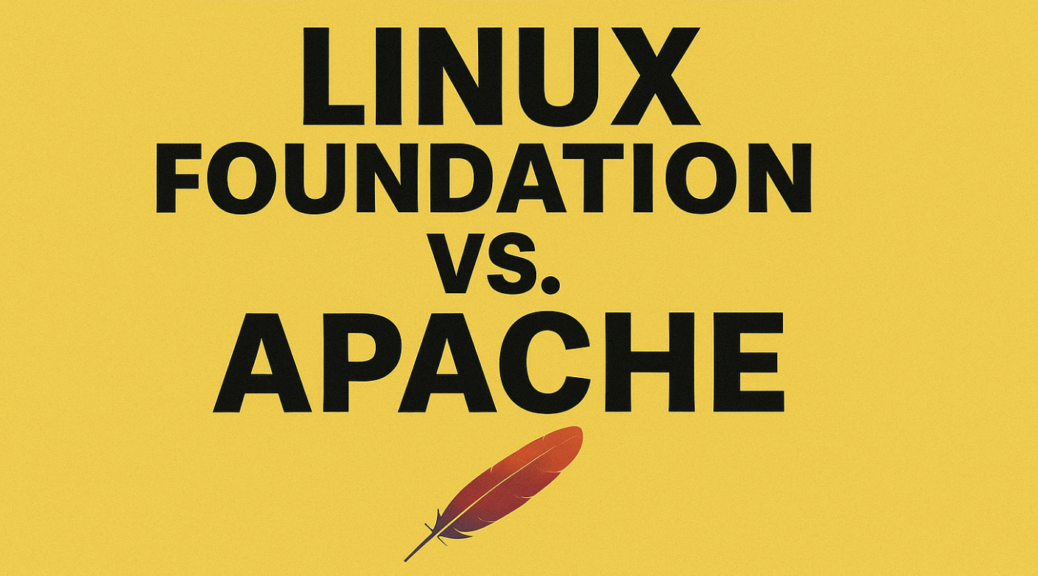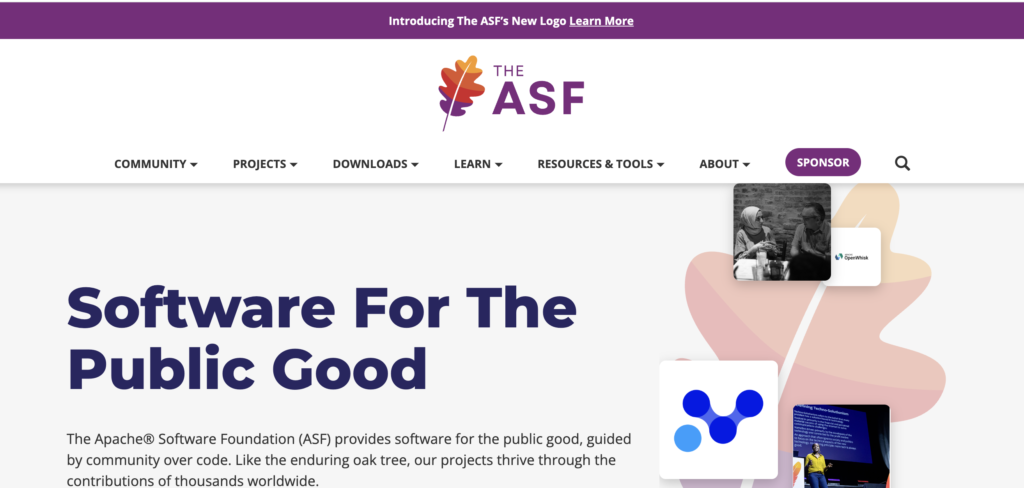
Linux Foundation vs. Apache: The Architects of Open Source
When you peel back the layers of modern software, two names appear again and again: the Linux Foundation (LF) and the Apache Software Foundation (ASF). They’re not competitors in the classic sense; they’re stewards of different philosophies and ecosystems within open source. Both have produced technologies that quietly run the internet, power Fortune 500 infrastructure, and serve as the backbone for startups you’ve never heard of. But their approaches couldn’t be more different.
So how do you compare two organizations that each claim a sizable piece of the open source universe? Let’s dive into their histories, governance, ecosystems, and where they shine — and finally, render a verdict on their place in the open source hierarchy.

Origins and Relationship
The Linux Foundation: Built Around the Kernel
The Linux Foundation was created in 2000 as a merger of two earlier groups — the Open Source Development Labs and the Free Standards Group. Its mission was ambitious but straightforward: support the continued growth of Linux, protect the kernel from fragmentation, and provide a neutral home for developers and companies investing in open source infrastructure.
Fast-forward to today and the LF is no longer just about Linux. It has become an umbrella for hundreds of projects across domains as diverse as networking, AI, blockchain, edge computing, and cloud. From Hyperledger in enterprise blockchains to Zephyr in embedded operating systems, the LF is essentially a superstructure for open source projects too big to fail.

The Apache Software Foundation: The “Apache Way”
The ASF’s roots go back to 1999, when a group of developers maintaining the Apache HTTP Server — which by then had become the most popular web server on the planet — formalized into a foundation. Their focus wasn’t just on software, but on a philosophy: the Apache Way. This doctrine emphasizes community over code, meritocracy over hierarchy, and independent, volunteer-driven development.
While the Linux Foundation grew by attracting corporate sponsors and incubating projects across industries, the ASF retained its grassroots style. It now hosts 350+ projects covering web servers, big data, machine learning, messaging, and more. But its DNA remains anchored in volunteerism and self-governance rather than corporate structuring.
Mission, Focus, and Philosophy
Linux Foundation: Infrastructure and Corporate Alignment
The LF is a corporate-friendly umbrella organization. Its mission is to accelerate open source innovation by providing legal, financial, and organizational scaffolding that makes big projects viable. It brings together titans like IBM, Intel, Google, and Microsoft to collaborate on projects that no single vendor could control — but all benefit from.
Think of the LF as a United Nations for open source. It negotiates peace between rivals, enforces governance standards, and ensures the plumbing of the internet doesn’t break when everyone wants to do things differently.
Apache: Community Over Code
The ASF is the home of grassroots open source. Its philosophy is that sustainable software comes from communities, not corporations. Every Apache project is governed by a Project Management Committee (PMC) made up of contributors who earned their place through merit. The ASF doesn’t dictate roadmaps, and it doesn’t steer projects toward corporate agendas. Instead, it trusts in the self-organizing power of community.
This philosophy gave us not just the Apache web server but also Hadoop, Spark, Kafka, and Cassandra — technologies that defined the big data era. The Apache Way is slower, messier, and sometimes chaotic, but it often leads to tools that capture developer imagination.
Governance and Structure
Linux Foundation’s Top-Down Neutrality
The LF runs like a professionalized nonprofit. It has an executive team, membership tiers, and technical advisory councils. Projects under its umbrella typically have technical steering committees, but the LF ensures they operate within legal and organizational guardrails. Corporate funding is explicit: companies pay to become members, and those funds bankroll infrastructure, events, and community resources.
This doesn’t mean LF “controls” the projects — but it does shape the environment, ensuring predictability and legal safety nets. It’s governance at scale.
Apache’s Bottom-Up Democracy
The ASF is radically decentralized. Each project is its own kingdom, managed by its PMC. There’s no executive committee dictating direction. Even the ASF board is largely hands-off, stepping in only for legal matters or disputes. Decision-making is democratic, often relying on “lazy consensus”: if no one objects, a proposal moves forward.
This anarchic model works because it prioritizes contributors over companies. The ASF doesn’t accept corporate membership fees the way LF does. Instead, it runs largely on donations, sponsorships, and volunteer effort. It’s leaner, less corporate, but also less financially muscular.
Ecosystems and Projects
Linux Foundation’s Breadth
The LF ecosystem is staggering. Some highlights:
- Linux Kernel — the project that started it all, running everything from Android phones to supercomputers.
- Kubernetes — originally donated by Google, now under the CNCF (a Linux Foundation sub-foundation).
- Hyperledger — blockchain frameworks and tools for enterprises.
- Let’s Encrypt — the certificate authority that helped HTTPS become ubiquitous.
- OpenJS Foundation, LF AI & Data, LF Energy — all domain-specific sub-foundations.
LF’s strength is in scale. If you’re a Fortune 500 looking to adopt or influence open source infrastructure, LF is the obvious home.
Apache’s Depth
ASF projects, though smaller in funding, punch above their weight:
- Apache HTTP Server — once the dominant web server, still widely used.
- Hadoop — the bedrock of big data processing.
- Kafka — the backbone of real-time streaming.
- Spark — revolutionized distributed computing.
- Lucene/Solr — search libraries used everywhere from Elasticsearch to enterprise apps.
Apache projects tend to define eras. The 2000s were about Apache HTTP. The 2010s were about Hadoop and Kafka. The 2020s may see more Apache machine learning libraries take off. The ASF’s focus on community yields fewer projects overall than LF, but those projects are often transformative.

Services, Training, and Certifications
Linux Foundation: Professional Support
LF offers training, certification, and professional development. You can become a Certified Kubernetes Administrator or take courses in Linux security. It runs global events like KubeCon and Open Source Summit. This professionalization makes LF attractive for enterprises and individuals looking to prove their skills.
Apache: Learning by Doing
ASF doesn’t run training academies or certification programs. It doesn’t sell credibility — it earns it through project adoption. If you want to learn Hadoop or Kafka, you learn from the community itself. This keeps Apache grassroots but limits its influence in the enterprise certification economy.
Strengths and Weaknesses
Linux Foundation
Strengths:
- Corporate alignment and funding
- Legal/IP protection
- Cross-domain portfolio
- Training and certifications
- Institutional credibility
Weaknesses:
- Sometimes seen as too corporate or bureaucratic
- Critics argue it prioritizes big vendors’ interests
- Risk of overextension with too many projects
Apache Software Foundation
Strengths:
- Community-driven philosophy
- Independence from corporate agendas
- Track record of era-defining projects
- Meritocracy that attracts passionate developers
Weaknesses:
- Financial limitations
- Slower governance processes
- Less direct enterprise engagement
- Reliance on volunteer labor makes sustainability tricky
Overlap and Collaboration – Linux Foundation vs. Apache
Both organizations share a common goal: make open source sustainable. But their strategies differ. LF builds scaffolding for massive, corporate-funded projects; ASF nurtures grassroots communities. Sometimes projects even interact: Linux Foundation’s projects may depend on Apache libraries, and Apache projects run atop Linux systems.
It’s not uncommon for developers to contribute to both worlds. What unites them is the shared belief that open source creates better technology than proprietary silos.
The Verdict: Different Crowns in the Open Source Kingdom
So, Linux Foundation vs. Apache — who wins?
If you measure by breadth, corporate influence, and professionalization, the Linux Foundation dominates. It’s the institution you want if you’re building infrastructure for the Fortune 500 or steering global standards. It’s the heavyweight of open source.
But if you measure by philosophy, grassroots innovation, and developer respect, the Apache Software Foundation is hard to beat. The Apache Way has birthed projects that rewired entire industries — not because companies demanded them, but because communities built them.
In the end, the verdict isn’t about winners. It’s about complementary roles. The Linux Foundation is the engineer building bridges across industries. Apache is the artist-inventor, crafting tools that shift paradigms. The world needs both.
But let’s be clear: whether you’re running Hadoop, Kubernetes, or the world’s tiniest container — you’re standing on Linux. And that’s why, in the deepest sense, the Linux Foundation remains the backbone of modern open source.